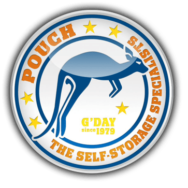-
A Beginner’s Guide to Self-Storage Facilities
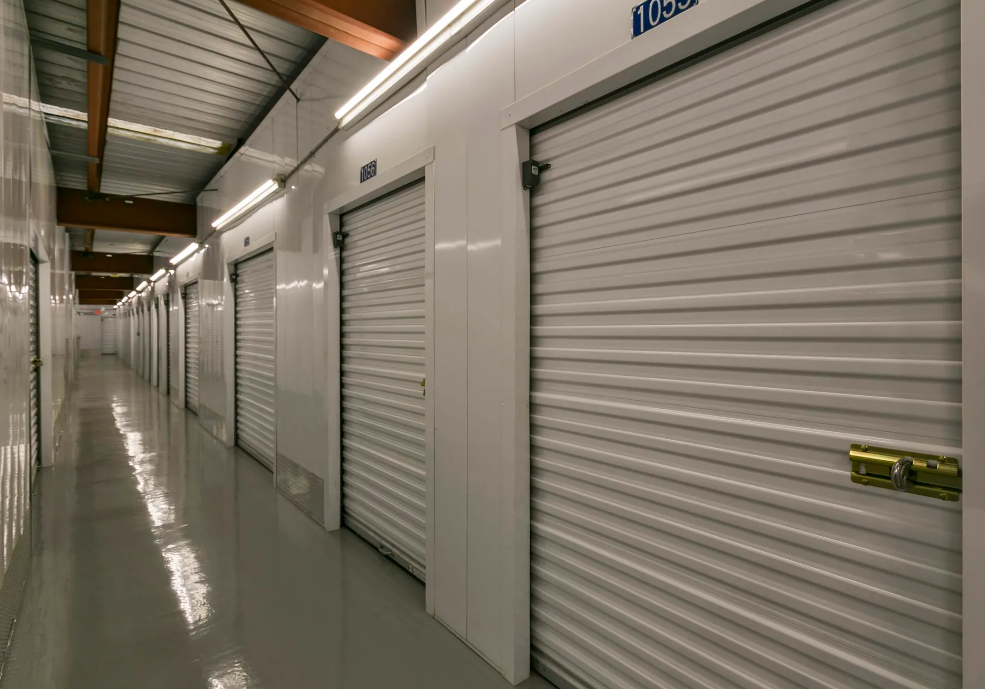
Self-storage facilities are a valuable resource for individuals and businesses alike. Whether you need to declutter your home, store seasonal items, or securely store important business documents, self-storage provides a convenient and affordable solution. In this comprehensive guide, we will explore everything you need to know about self-storage, from how it works to tips for maximizing your space and security.
What is Self-Storage?
Self-storage, also known as mini-storage or storage units, is a service that provides individuals and businesses with a secure and convenient space to store their belongings. Storage units come in various sizes and types, and they can be rented on a short-term or long-term basis.
Why Use Self-Storage?
Self-storage serves a variety of purposes:
- Decluttering: It helps clear out items that are taking up space in your home or office.
- Moving: Store your belongings during a transition, such as moving to a new home or renovating your current one.
- Seasonal Items: Keep seasonal items, like holiday decorations or sporting equipment, out of your way when not in use.
- Business Storage: Store excess inventory, documents, and equipment to free up workspace.
- Security: Protect valuable items, sensitive documents, and collectibles.
Choosing the Right Storage Unit
Determine Your Needs
Before renting a storage unit, assess your needs. Consider the following:
- Quantity: Estimate the number of items you need to store.
- Type of Items: Some items, like electronics or artwork, may require special conditions.
- Duration: Determine whether you need short-term or long-term storage.
Consider Location and Accessibility
Choose a Pouch facility that is convenient for you, whether it’s near your home or workplace. Accessibility is crucial and our units are accessible 24/7.
Evaluate Security
Security is paramount when selecting a storage facility. Look for features such as:
- Surveillance Cameras: Pouch has 24/7 high-definition video cameras to deter theft and provide evidence in case of an incident.
- Gated Access: Pouch facilities all have security fences with electronically controlled access gates.
- On-Site Management: A manager on-site can quickly respond to security concerns.
Size Matters
Storage units come in various sizes, typically ranging from small lockers to large rooms. It’s important to choose the right size to avoid paying for unused space. Pouch offers several sizes:
- 5’x5′: Equivalent to a small closet, good for a few boxes or small furniture items.
- 5’x10’: It’s like a standard walk-in closet. Approximately 50 square feet, this unit holds a dozen boxes, a desk and chair, and a mattress and box spring.
- 5’x15’: The size of a large walk-in closet, this rental can hold the contents of a small studio apartment, including small furniture, boxes, and bookcases.
- 10’x10′: About 100 square feet, suitable for furnishings from a one-bedroom apartment.
- 10’x15’: Use this space to store the contents of a small house or a two-bedroom apartment: two couches, two mattress sets, a coffee table, fridge, and TV.
- 10’x20′: The size of a one-car garage, this space is ideal for storing the contents of a two-bedroom house, including appliances.
- 10’x25’: This space can fit a couple of couches, an oversized armchair, dining room set, fridge, washer and dryer, entertainment nook, bookcases, and more.
- 10’x30’: This 300-square-foot space can hold the contents of a three-to-four-bedroom house.
Packing and Organizing
Organizing and Inventory
To maximize your storage space and easily locate items, maintain an organized system. Create an inventory list of all the items you store and update it regularly. Organize similar items together and keep frequently accessed items at the front.
Packing Tips
Proper packing is essential to prevent damage to your items during storage. Here are some packing tips:
- Use Quality Packing Materials: Invest in sturdy boxes, packing tape, bubble wrap, and other packing supplies.
- Fill Boxes to Capacity: Use appropriate box sizes and fill them to prevent them from collapsing.
- Disassemble Furniture: Take apart large furniture items to protect them and save space.
- Protect Fragile Items: Wrap fragile items in bubble wrap or packing paper.
Labeling Your Items
Label all boxes and items clearly. Use a system that makes it easy to identify the contents. Color-coded labels or a numbering system can be helpful. This will save you time when you need to get to your stuff.
Furniture Disassembly
To maximize space in your storage unit, disassemble large furniture items like beds, tables, and bookshelves. Keep screws and small parts in labeled bags to reassemble them later.
Transportation and Moving In
Moving Supplies
Gather all necessary moving supplies, including:
- Boxes: Various sizes to accommodate different items.
- Packing Materials: Bubble wrap, packing paper, and packing peanuts.
- Tape: Strong packing tape for sealing boxes.
- Furniture Covers: Protect your furniture from dust and damage.
We Move You Free
- Pouch is the innovator of the “we move you free” program. The Pouch Moving Truck and Driver are provided free of charge (The driver is not allowed to assist you).
- Each Truck carries one Fridge/Furniture dolly and ten moving pads.
- Our service area is a 15-mile radius from the storage facility.
- Contact your nearest Pouch facility for more details.
Loading and Unloading
When loading your storage unit, follow these guidelines:
- Place heavy items at the bottom and lighter items on top to prevent crushing.
- Leave a clear aisle in the center of the unit for easy access to items.
- Stack boxes and furniture systematically to maximize space.
Maintenance and Accessibility
Regular Visits
Visit your storage unit periodically to check on your items. This helps ensure they are in good condition and allows you to make any necessary adjustments to your organization system.
Maintenance of Stored Items
Check for signs of damage, pests, or moisture during your visits. Replace damaged boxes and address any issues promptly to protect your belongings.
Accessibility and Operating Hours
All Pouch facilities offer accessibility to your unit 24/7 with secure digital gate entry. Come and go any time you like to load and unload your valuables.
Security and Insurance
Facility Security
While Pouch facilities have ample security measures in place, it’s essential to take personal security measures seriously. Here’s how:
- Use Quality Locks: Invest in a high-quality lock for your storage unit.
- Limit Access: Share access codes and keys only with trusted individuals.
- Inventory and Documentation: Keep records and photographs of valuable items.
Personal Security Measures
In addition to facility security, consider self-storage insurance. This insurance can protect your items in the event of theft, damage, or natural disasters. Review your homeowner’s insurance policy to see if it covers items in storage.
Costs and Contracts
Pricing Structures
Storage unit prices can vary based on factors such as location, size, and features. Understand the pricing structure of the facility, which may include monthly fees and additional charges.
Rental Contracts
Before signing a rental contract, read and understand the terms and conditions. Pay attention to rental periods, payment schedules, and any termination clauses. Be aware of any price increases that might occur during your rental.
Additional Fees
Watch out for hidden fees, such as late payment charges, administrative fees, or fees for changing units. Understanding these fees can help you avoid unexpected costs.
Moving Out and Closing Your Account
Termination Process
When you no longer need the storage unit, follow the facility’s termination process. This typically involves giving notice to the facility and ensuring your unit is empty and clean.
Leaving a Review
After your storage experience, consider leaving a review of the facility. Reviews can help others make informed decisions and hold storage facilities accountable for their service quality.
Whether you need short-term or long-term storage, Pouch can help offer a convenient and secure solution for your storage needs. With have nine state-of-the-art storage facilities located throughout California, we’re proud to serve our community and several other surrounding areas with affordable and secure storage solutions. Find us in Anaheim, Rancho Cucamonga, Tustin, Lake Forest, San Juan Capistrano, Long Beach, Fountain Valley, Pasadena, and Santa Ana.
Contact your local facility if you would like to take a tour. We would love to show you around!
-
Using Self-Storage to Facilitate Renovations

Home renovation projects can be exciting but challenging endeavors, requiring careful planning, organization, and space management. As you embark on the journey to improve your living spaces, Pouch self-storage can be an invaluable resource. Our units offer secure, convenient solutions for storing belongings, safeguarding them from dust and damage, and creating more room for renovation work. In this comprehensive guide, we will delve into how to use Pouch self-storage to facilitate home renovation projects, offering insights, tips, and considerations to help you make the most of your renovation project.
The Pre-Renovation Preparation
Before you commence a home renovation project, meticulous planning and preparation are essential. Self-storage can play a significant role in this initial phase:
- Assess Your Storage Needs: Conduct a thorough inventory of your belongings to identify items that need to be removed from the renovation area. This includes furniture, appliances, décor, and personal items that could be damaged during construction.
- Choose the Right Self-Storage Facility: Research and select a self-storage facility that caters to your specific requirements. With nine different storage facilities across Southern California, Pouch has a variety of locations to suit your needs. Check out our map to select the location nearest to you.
- Estimate Duration: Consider the expected duration of your renovation project. This will help you determine the size of the storage unit you need and the appropriate rental period.
- Sort and Declutter: Take advantage of this opportunity to declutter your home. Donate, sell, or dispose of items you no longer need. Storing fewer items will make your storage solution more cost-effective.
Packing and Storing
Once you’ve selected the right storage facility, it’s time to prepare your items for storage:
- Proper Packing: Safely pack your items in suitable containers and boxes. Use packing materials like bubble wrap, packing paper, and furniture covers to protect fragile and valuable items. Clearly label your boxes for easy identification.
- Climate Control: If you possess sensitive items, consider renting a climate-controlled storage unit. This will help protect items like electronics, wooden furniture, and artwork from temperature and humidity fluctuations.
- Efficient Use of Space: Maximize the space in your storage unit by stacking items vertically and using shelving. Maintain a clear aisle for easy access to your items, placing frequently needed items closer to the entrance.
- Protect Your Belongings: Employ furniture covers and dust sheets to safeguard your items from dust and debris that can accumulate during the renovation.
Security and Accessibility
Ensuring security and accessibility to your self-storage unit during the renovation is crucial:
- Security Measures: Pouch offers robust security measures such as surveillance cameras, electronic gate access, bright lighting, and on-site staff. This ensures the safety of your belongings while you focus on the renovation.
- Access Schedules: Pouch offers extended 24/7 access to make sure that you can access your unit whenever you need. Be aware that we are closed on major holidays, so plan accordingly!
- Maintain a Detailed Inventory: Maintain a comprehensive inventory of the items in storage. Use a spreadsheet or a mobile app to keep track of what you have stored. This will help you locate items quickly when needed.
- Insurance: Consider obtaining insurance for your stored items. Check if your homeowners’ insurance covers items in storage, and if not, inquire about renter’s insurance.
Staying Organized and Efficient
Keeping your belongings efficiently organized throughout the renovation project will save you headache and help keep your project on track for success:
- Regular Inspections: Periodically visit your storage unit to ensure everything remains in order. This will help you identify and address any potential issues promptly.
- Communication: Maintain open communication with your renovation team and any contractors. Ensure they know the location of the storage facility and how to access it if necessary.
- Transition Planning: Plan the transition back to your home after the renovation. This may involve gradual retrieval of items or rearranging your storage unit for easier access to items you’ll need first.
- We Move You Free: Pouch innovated the “We Move You Free” Program. We pick up your Goods (within a 15-mile service area) in our truck delivering them to your rented Pouch Self Storage space, where you can load and unload your goods. Our goal is to make your moving experience easier by providing free tools to assist your moving process.
Post-Renovation Clean-Up
Once your home renovation project is complete, you’ll need to retrieve your stored items and settle back into your newly improved space:
- Thorough Cleaning: Before moving items back into your home, conduct a thorough cleaning to ensure the space is dust-free and ready for your belongings.
- Furniture Assembly: As you move items back, reassemble furniture, hang decorations, and arrange your space according to your renovation plans.
- Dispose of Unwanted Items: If you’ve decided not to reintroduce certain items into your newly renovated space, consider donating, selling, or recycling them.
- Take Your Time: While it can be tempting to rush the process, take your time in making your home exactly the way you want it. A well-organized storage unit can help you prioritize what items to reintroduce first.
Budgeting for Self-Storage
When planning a home renovation project that involves self-storage, it’s essential to consider the costs involved. Self-storage fees can vary widely depending on factors like location, unit size, and climate control. Here are some tips for budgeting your self-storage expenses:
- Compare Prices: With nine different locations in Southern California, Pouch has a variety of different types of storage unit solutions to meet your needs. Compare prices and sizing to make sure we are providing the unit that best suits your needs.
- Size Matters: Choose the right size of storage unit. A smaller unit will cost less, but if you end up with a unit that’s too small, you might have to pay for additional storage space later. Use our storage sizing tool to estimate the size of storage that is right for you.
Making the Most of Self-Storage
Getting the most out of your self-storage experience is crucial for a smooth home renovation project:
- Efficient Use of Space: If you have a limited budget and can’t afford a large unit, maximize the space you have by disassembling furniture and using stackable storage containers.
- Label Everything: Proper labeling can save you a lot of time and effort when you need to retrieve specific items. Create a comprehensive inventory and label your boxes clearly.
- Accessibility: Plan the layout of your storage unit for easy access. Keep items you might need during the renovation near the front, and stack less frequently needed items towards the back.
- Security: Don’t overlook security. Protect your stored items by using high-quality locks on your unit and consider additional security features, like alarmed units. Pouch facilities have a host of high-tech security features like electronic gate keypad access and high-definition security cameras to help make sure your space is always secure.
Creative Uses of Self-Storage During Renovation
Self-storage doesn’t have to only hold your stuff during a renovation. Pouch spaces are versatile and can serve various purposes during a home renovation:
- Workshop: If your home renovation involves significant construction or remodeling work, consider using a climate-controlled self-storage unit as a temporary workshop. This can help keep your home cleaner and safer.
- Temporary Office: If your home office is part of the renovation, you can set up a temporary office in your storage unit. Ensure it has adequate power supply and lighting for your needs.
- Art Studio: If you’re an artist or creative professional, a climate-controlled storage unit can serve as a temporary art or music studio during the renovation.
Maintaining a Stress-Free Home Life
Home renovations can be stressful, but using self-storage can help maintain a comfortable and organized living environment:
- Essential Living Space: Create a designated, clutter-free space within your home where you can relax and unwind. This will provide a respite from the chaos of the renovation.
- Safety Precautions: If you have children or pets, make sure they are safe from any renovation hazards. Keep them away from the construction area and avoid storing dangerous materials in your storage unit.
- Reducing Disruptions: Using self-storage can minimize disruptions to your daily routine, making the renovation process more manageable.
- Clear Communication: Maintain open communication with your renovation team. Let them know your expectations and any specific instructions regarding access to the storage unit.
Using Self-Storage for Different Renovation Types
The way you use self-storage can vary depending on the type of renovation you’re undertaking:
- Kitchen and Bathroom Renovations: These projects often involve the removal of appliances and fixtures. Use self-storage to safely store these items until they’re needed again.
- Whole-House Renovations: When renovating an entire house, self-storage becomes even more critical. Consider renting a larger unit to accommodate the contents of your entire home. Our storage space calculator can help you select the right amount of space for your needs.
- Outdoor Renovations: If your project involves outdoor improvements, like landscaping or deck building, self-storage can be a convenient place to store gardening equipment, tools, and outdoor furniture.
- Multi-Phase Renovations: For complex renovations with multiple phases, use self-storage to keep items from the areas currently under construction. Rotate items in and out of storage as needed.
Moving Your Stuff Back In
Once your home renovation is complete, it’s time to retrieve your belongings. An organized approach is best:
- Prioritize Necessities: Start by retrieving items that are essential for your daily life, such as kitchenware, clothing, and personal items.
- Gradual Reintegration: Don’t rush to bring everything back into your home at once. Gradually reintroduce items to avoid overwhelming yourself.
- Cleaning and Inspection: As you retrieve items, clean and inspect them for any damage that may have occurred during storage.
- Reassemble Furniture: Reassemble furniture items and reorganize your home according to your renovation plans.
Temporarily storing your things with Pouch can facilitate your home renovation projects. You’ll be able to protect your belongings, maintain a stress-free living environment, and ensure the smooth execution of your renovation plans. By carefully considering your needs, budget, and the type of renovation you’re undertaking, you can make the most of self-storage and enjoy the benefits of a well-organized, efficient, and successful renovation project.
Whether you’re renovating a single room or your entire home, Pouch can help offer a convenient and secure solution for your storage needs. With proper planning and the right approach, your home renovation journey can be a rewarding and transformative experience.
Find us in Anaheim, Rancho Cucamonga, Tustin, Lake Forest, San Juan Capistrano, Long Beach, Fountain Valley, Pasadena, and Santa Ana. Contact your local facility if you would like to take a tour. We would love to show you around.
-
How Our Facilities Ensure the Safety of Your Belongings
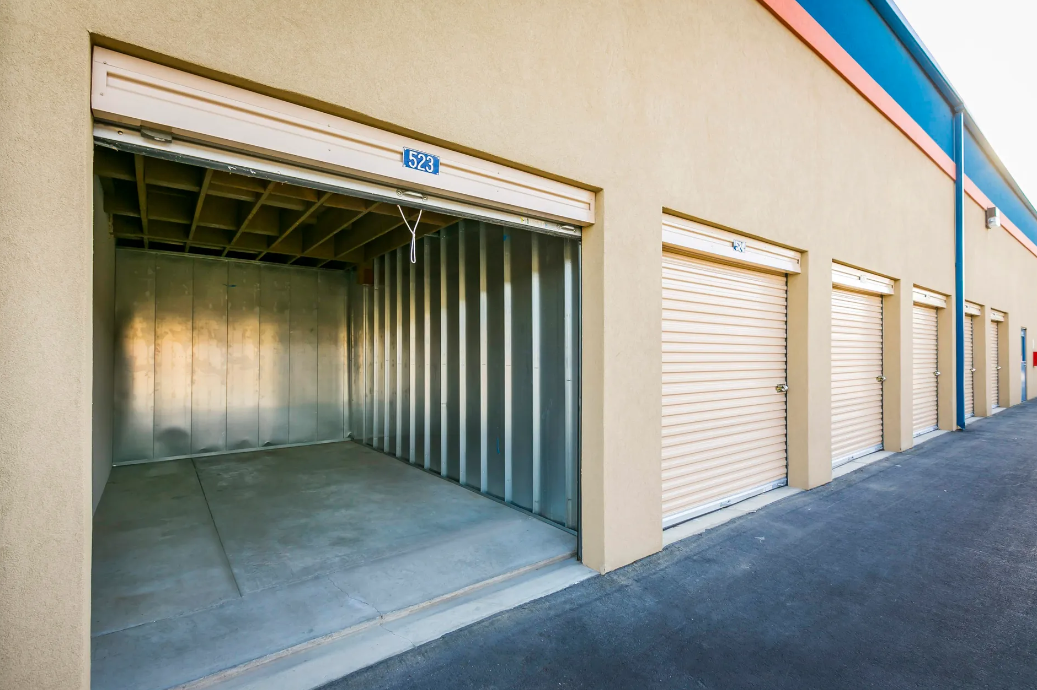
Pouch Self Storage is your partner in total security for safeguarding your valuable possessions. When you store with Pouch, you deserve the expectation that your belongings will be safe and protected in every way. That is why Pouch provides several protective measures to ensure the security of our facilities at all times.
Why is Self-Storage Security Important?
A storage facility’s service is only as good as the level of security and service that it can provide. Even if you have your own door lock for the storage unit that keeps your possessions, security of the overall facility is the first line of defense for keeping our tenants’ units safe.
Preventing Theft and Unauthorized Access: Self-storage facilities can be attractive targets for thieves due to the concentration of valuable items. Robust security measures, including surveillance cameras, access control systems, and on-site security personnel, deter potential criminals and prevent unauthorized access to storage units.
Preventing Vandalism and Property Damage: Beyond theft, security measures also protect the facility itself from vandalism, property damage, and other forms of destructive behavior. This helps maintain the integrity of the property and reduces repair costs.
Better for the Neighborhood: A secure self-storage facility contributes to the overall safety of the surrounding community. By deterring criminal activity and preventing theft, self-storage security plays a role in maintaining a safe environment for tenants, staff, and the surrounding neighborhood.
Your Peace of Mind: When you entrust your belongings to Pouch self-storage facilities, you expect them to be kept safe and secure. Our security measures are just one way that Pouch provides you with peace of mind, so you know your possessions are protected from theft, damage, or loss.
Reputation and Customer Satisfaction: Pouch is only as good as our reputation for security. We want your loyalty and word-of-mouth to your friends, family, and neighbors. By prioritizing security measures, we hope you will choose to store with Pouch. Our strong company history dates back to 1979, in large part because we have a commitment to protecting what’s most important to you.
All Pouch facilities are equipped with a number of security measures to provide you with peace of mind, so you can know that your self-storage space is protected from unwarranted entry. Let’s take a look at how our top-of-the line facilities across Southern California are the pinnacle of safety and security.
Fencing and Electronic Access Entry Gates
Security at all our facilities starts at the perimeter and entry points. Each of our nine storage facilities has perimeter fencing and electronically controlled keypad-activated entry gates.
Bright Ideas For Safety
Pouch prioritizes maintaining well-lit storage areas. From the entryways to the parking lot, to the interior corridors, we keep things bright so that you can feel safe and secure no matter what time of day or night you choose to pack in, load out, or just check on your storage unit.
Advanced Surveillance Cameras
One of the primary benefits of camera surveillance is its ability to deter criminal activity. The mere presence of visible cameras serves as a significant deterrent to potential thieves and vandals. Knowing that their actions are being monitored and recorded makes perpetrators less likely to target a self-storage facility.
In the event of a break-in or other security breach, surveillance footage can provide valuable evidence for investigations. Clear images of suspects and their activities can assist law enforcement in identifying and apprehending criminals. This not only helps bring perpetrators to justice but also aids in the recovery of stolen goods.
Remote Monitoring and Real-Time Response
Advanced surveillance systems allow for remote monitoring, enabling our managers to keep an eye on the property from any location. This real-time access to surveillance footage enables prompt response to any suspicious activity or security concerns.
Remote monitoring also facilitates proactive security measures. By observing patterns and identifying potential vulnerabilities, facility managers can make adjustments to security protocols and staff deployment to prevent incidents before they occur. Our high-tech setup provides the following benefits:
- Monitoring of Access Points: Cameras are strategically placed to monitor entry and exit points, ensuring that only authorized individuals access the facility.
- Monitoring of Common Areas: Surveillance of common areas, such as hallways and parking lots, help prevent vandalism, property damage, and other unwanted activities.
- Dispute Resolution: In case of tenant disputes or claims of property damage, surveillance footage can provide objective evidence to resolve issues fairly and efficiently.
Computer Monitoring Systems
All Pouch storage facilities have a state-of-the-art computer monitoring system. This system allows our self-storage managers to monitor the opening and closing of every storage unit door, 24 hours a day. Only the persons you authorize with your secret digital code are allowed access to your storage unit.
Safety Measures We All Share
Even with these robust security measures in place, it’s important to have a lock that you provide for your own storage unit. You wouldn’t leave your keys in your car unlocked. In the same way, preemptively securing your unit is important for safeguarding your belongings against theft. If you ever need to replace your lock, our self-service kiosks are available 24 hours a day. These provide a convenient place to purchase a new lock, or to make a payment or get a receipt.
RV, Boat & Vehicle Storage Security
Pouch offers a variety of specifically designed outdoor and covered RV, Boat & Vehicle parking spaces. Visit our Fountain Valley, Victoria, or Long Beach locations to learn more.
Why You Should Choose Pouch Self Storage
Pouch has been operating mini-storage facilities since 1979 and we’re committed to keeping our clients’ belongings safe. Founded by John Yelland, who hails from Australia, Pouch Self Storage is named in honor of the kangaroo’s pouch – nature’s safe and secure storage spot. We’re an industry leader in design, building, and maintenance of self-storage facilities, and we strive to give our occupants the most advanced security systems available. At our nine Southern California facilities, you’ll find the most secure self-storage options for your needs. Contact us today for more information.
-
How to Choose the Right Storage Boxes for You
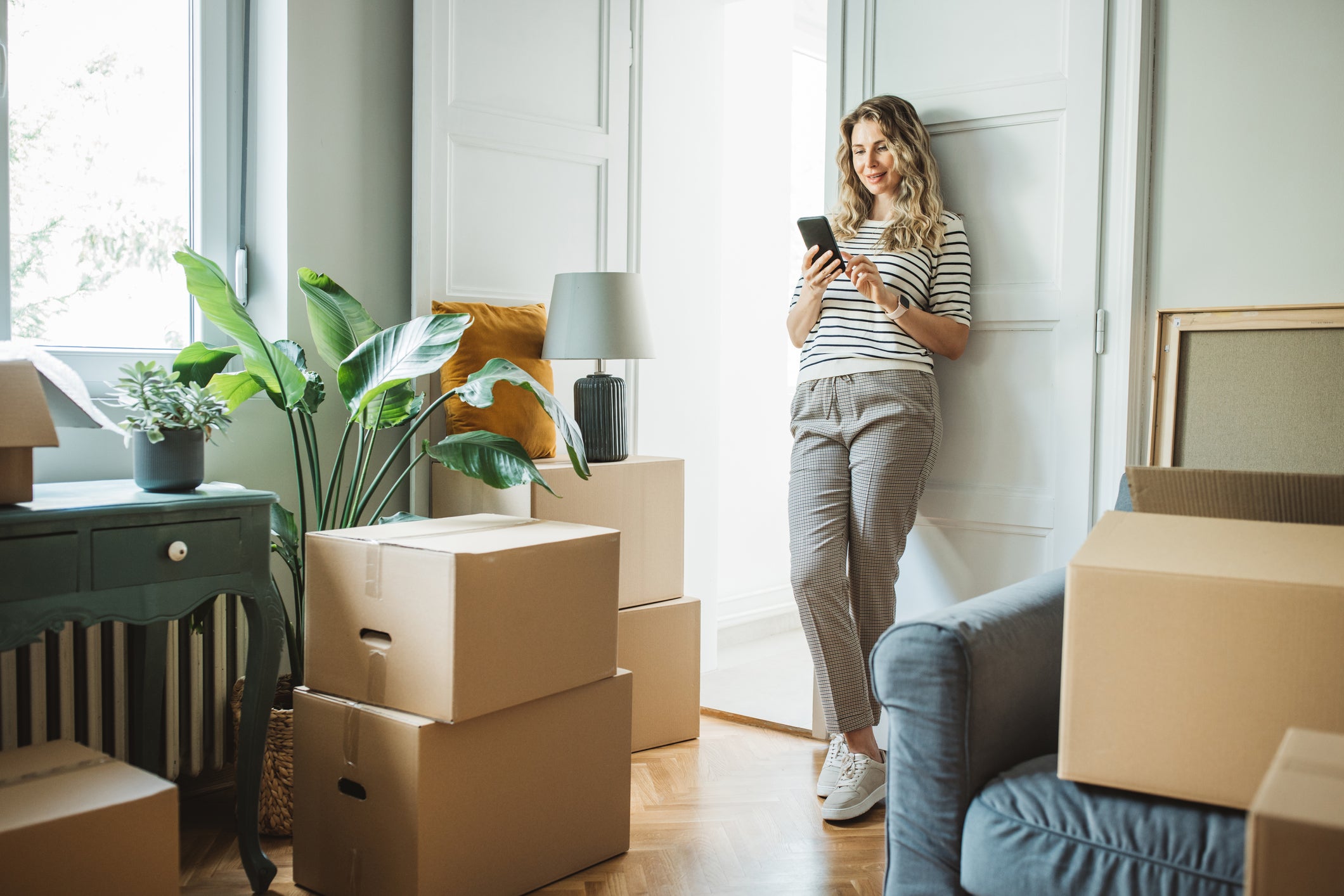
When you’re packing your things in storage, you’ll want to pack them carefully. This means choosing the right storage unit and using the right packing materials, but what about the boxes? Does the type of box really matter? It does, and the type of box you choose will depend largely on what you intend to store in it. Let’s take a look at different types of storage boxes and how they are best used.
- Cardboard is useful but not the best option for long-term storage. Cardboard boxes are often the go-to for packing, and certainly for moving, and with good reason. They’re lightweight, inexpensive, easy to label, stackable, and they can be easily reused or recycled. However, if you’re going to be storing your items for an extended period of time, cardboard may not be your best option. Cardboard boxes are easily damaged, attract vermin, and will quickly allow mold and mildew growth if they get wet. If you are storing items for several months and your unit is not climate controlled, steer clear of carboard boxes.
- Plastic boxes are perfect for storage. Easily stackable, impervious to water, and nearly indestructible, plastic bins are the perfect option for storing things safely. They don’t require packing tape, because they are self-sealing, and they’ll last a long time. However, they are much more expensive than cardboard, so if you are only storing things for a short time, they may not be worth the expense.
- Some items require specialty boxes. If you are storing something like dishes, art, or electronics, it’s worth finding specialty boxes designed to hold these items. Typically, these boxes will have inserts that keep things from shifting in transit and make them easier to pack. While they can be more expensive than traditional boxes, they give you the peace of mind that comes from knowing your items are safe and secure.
- It’s important to choose the right sized boxes. Small boxes are good for small, heavy things like books, because you don’t want a large box to contain too much weight. You can also pack fragile things like dishes in small boxes, to help keep them protected. Medium boxes are good for larger items that don’t need to be tightly packed, like clothing, toys, or cookware. Large boxes can be filled with lightweight things like linens and blankets, and extra large boxes can hold things that don’t fit in smaller boxes, like comforters, coats, and larger kitchen appliances. Try to keep small boxes under 50 pounds, medium and large under 65, and extra large under 70 pounds, so that they will not be too cumbersome to move. Wardrobe boxes are handy for storing hanging items, and you can use the bottom for things like shoes and purses.
No matter what type of boxes you choose, there are a few good practices to remember. First, choose high-quality boxes so that they will be less likely to allow your items to be damaged. Label everything clearly so that you know exactly what’s inside, and stack your boxes with the heavier things on the bottom. When you pack a box, be sure to fill in gaps between items with packing materials, and when you stack your boxes, do the same thing. This way, the items inside the boxes are less likely to shift and sustain damage, and the boxes themselves are also less likely to shift.
Choosing the right boxes is important, and so is choosing the right storage facility. When you’re seeking a place to store your things in Southern California, you owe it to yourself to check out Pouch Self Storage. We’ve been operating mini-storage facilities since 1979 and we’re committed to keeping our clients’ belongings safe. Founded by John Yelland, who hails from Australia, Pouch Self Storage is named in honor of the kangaroo’s pouch- nature’s safe and secure storage spot. We’re an industry leader in design, building, and maintenance of self-storage facilities, and we strive to give our occupants the most advanced security systems available. At our nine Southern California facilities, you’ll find state-of-the-art computer monitoring systems that allow our self-storage managers to monitor the opening and closing of every storage unit door, 24 hours a day. For more information, call (800) 378-4598 or contact us through our website.
-
When it’s Time to Consider Choosing Long-Term Storage
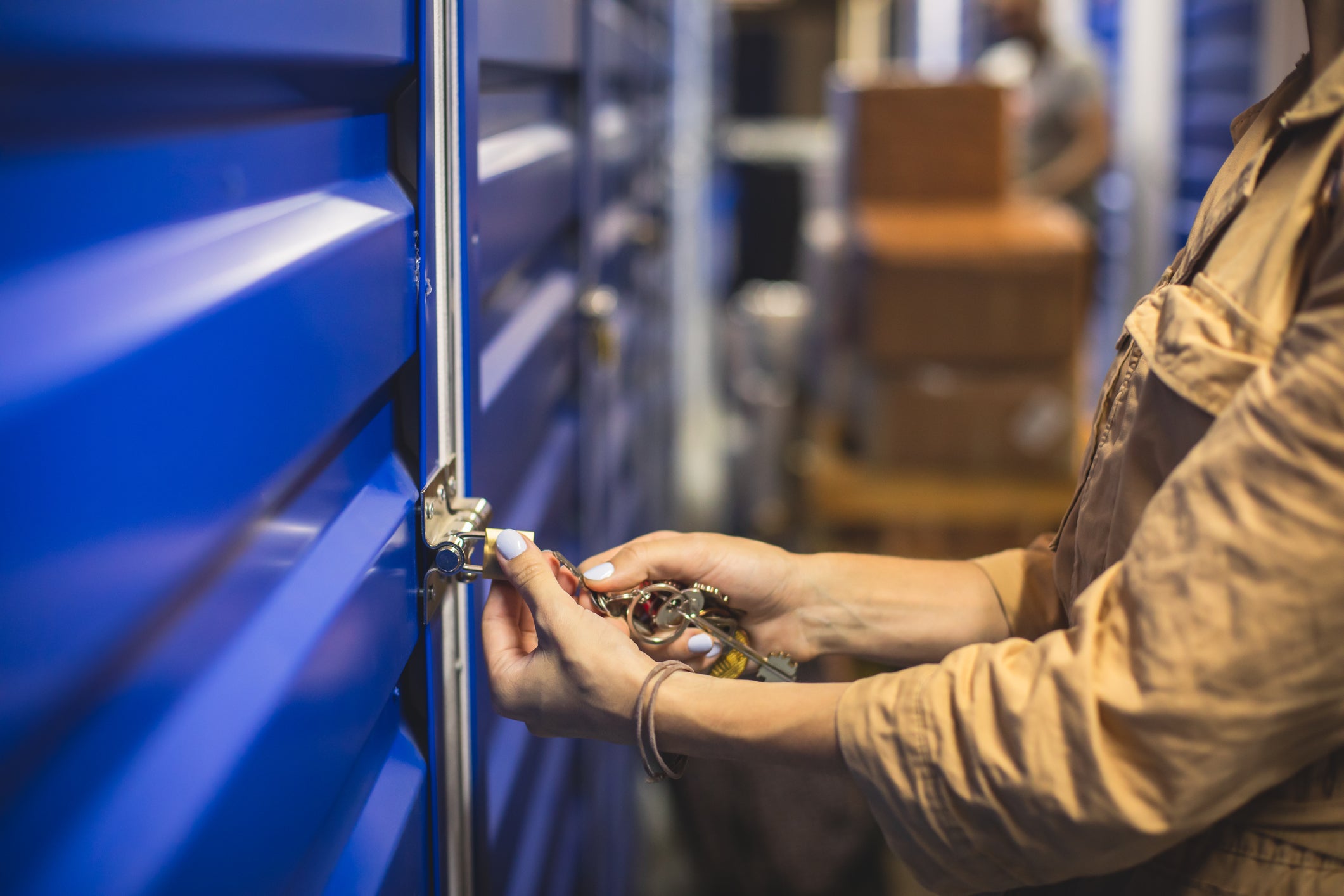
Sometimes, you need storage for a little while. Maybe you’re moving, changing offices, or just holding on to some furniture for someone. There are times, though, when short-term storage is not sufficient. Here, we look at some reasons you might need long term storage, as well as offering some tips for choosing a storage unit and preparing your things to be stored for an extended period of time.
What is long-term storage? It’s the kind of storage you need if you’ll be keeping things in a storage unit for more than three months. It’s important to find a clean storage unit near your home, but climate control is not as important for short-term storage as it is when you’ll be storing things for several months or even years. Without a space that regulates the temperature and humidity, you will be risking damage to your belongings from mold and mildew. You’ll also want to cover your furniture in long-term storage to protect them, while this is not necessary for short-term storage.
If you are storing seasonal items, like Christmas decorations, it’s unlikely that you will need them within 10 to 12 months. In that case, it’s smart to choose a storage unit appropriate for long-term storage. The same holds true for sporting equipment you only need once a year. A military family might need to store their things when they’re taking an overseas assignment, and those who winter in other states might want to store some of their furniture or a vehicle while they’re away.
No matter how long your things will be in storage, there are a few factors you should consider. Look for a storage unit that’s the right size to store all of your things, so you don’t end up in a bind when you try to pack it. Consider how much access you’ll need to your belongings and make sure the facility you choose will be convenient for you. Look into the facility’s policies and reputation so that you can be sure your items will be well-protected while you’re away. Make sure the cost of the unit won’t overtax your budget in the long run, and consider storage insurance to protect your belongings from damage or theft.
The way you pack your storage unit will vary based on how long you plan to store your things. No matter how long they’ll be there, your items should be carefully labelled and packed to protect them from harm. You should make sure you can retrieve things from your unit easily and keep a detailed inventory of what is in the unit. If you’re packing for short term storage, try to leave a pathway in the center of the unit so that you can easily move things in and out. Try to arrange your things against the walls, using vertical space to save on floor space. If you’re storing things long term, invest in high-quality boxes or vacuum sealed bags. This will help protect your items from humidity and other causes of damage. It’s a good idea to stack your things on pallets if you can, to allow better airflow through the unit and protect against condensation and water damage.
Whether you need long or short-term storage, you can rely on Pouch Self Storage. We’ve been operating mini-storage facilities since 1979 and we’re committed to keeping our clients’ belongings safe. Founded by John Yelland, who hails from Australia, Pouch Self Storage is named in honor of the kangaroo’s pouch- nature’s safe and secure storage spot. We’re an industry leader in design, building, and maintenance of self-storage facilities, and we strive to give our occupants the most advanced security systems available. At our nine Southern California facilities, you’ll find state-of-the-art computer monitoring systems that allow our self-storage managers to monitor the opening and closing of every storage unit door, 24 hours a day. For more information, call (800) 378-4598 or contact us through our website.
-
Storage Guide for a College Student
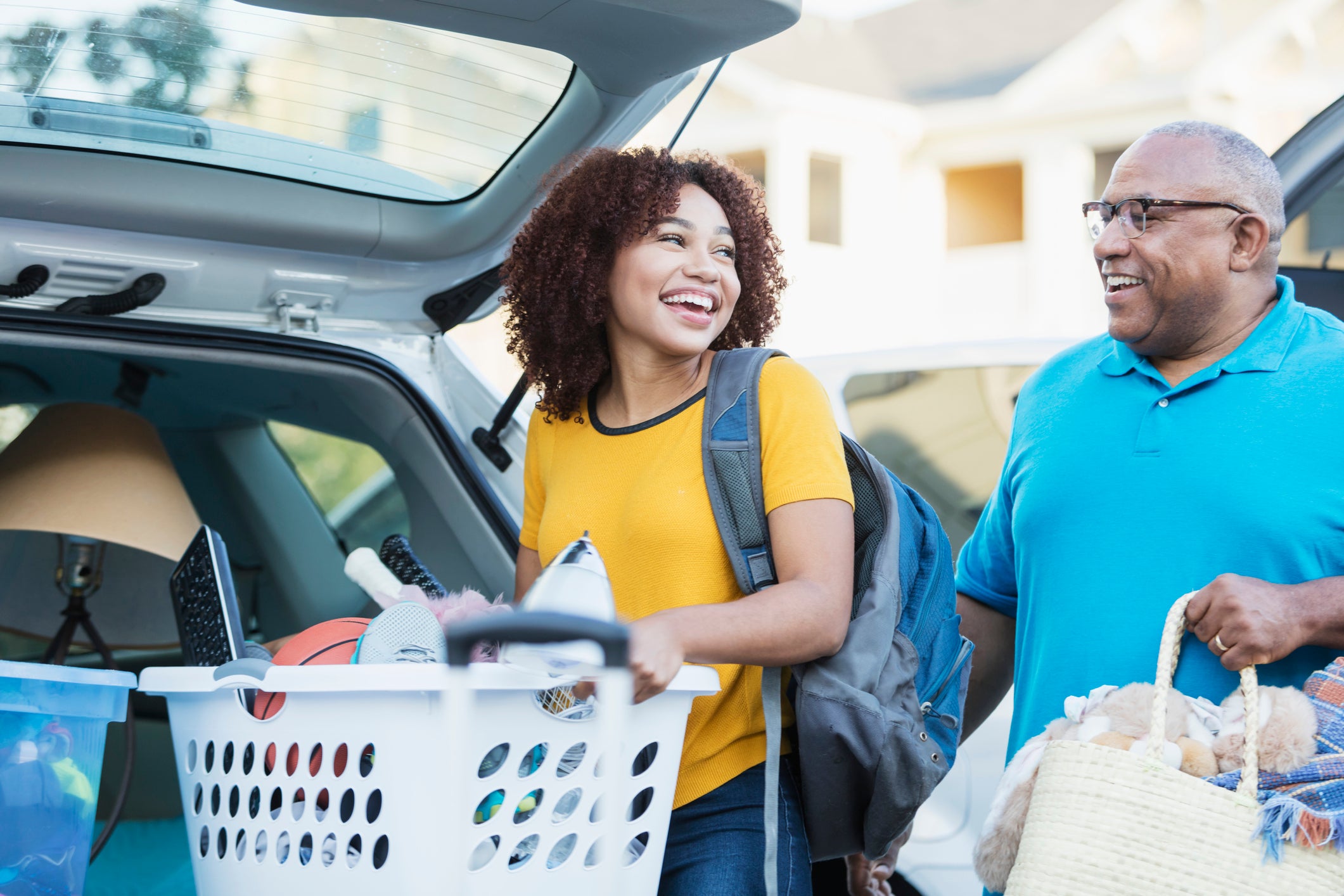
If you’re in college, it’s likely that you’ve hauled quite a bit of stuff from home into your new dorm or apartment. When the school year is over and it’s time to head out for the summer, you probably won’t want to have to take all of those things with you. What’s the solution? Get a storage unit for the summer! Using self-storage is the perfect way to minimize what you have to take back and forth, while making sure you have what you need when school starts back up in the fall.
What kind of storage unit will you need? Storage units can typically hold at least one room full of furniture. For students living in two or three-bedroom apartments, a larger unit may be a better option. Which size unit will you need? A 5’ by 5’ storage space is perfect for holding a loveseat, boxes, and home décor, while a 5’ by 10’ unit will hold a sofa or twin bed, along with some smaller furnishings and décor. You should also consider a climate-controlled storage unit, especially if you’re storing clothing, papers, or furniture. This will protect your furniture from the elements, as well as mold and mildew.
No matter what you are storing while you’re away, make sure it’s packed correctly.
- Furniture: Disassemble what you can, and pack small things in larger things when you can’t. For instance, take apart a bed frame, but store small objects in your dresser drawers. When storing a mattress, wrap it in two fitted sheets or store it in a plastic mattress bag to protect it.
- Kitchen items: If you have pots and pans, glass or plastic storage containers, dishes, glasses, and silverware, there’s no need for you to bring those things back home with you. Instead, store your kitchen for the summer. Put fragile items in boxes lined with bubble wrap or packing paper, wrapping breakables carefully and storing heavier items on the bottom. Put extra filling material in the tops of the boxes, so that you can stack them without the risk of breaking any of their contents.
- Bedding: You probably have bedding that was purchased specifically for your room at college, especially if you live in the dorm. There’s no need to carry those things home and try to find a place for them in your parents’ house over the summer. Instead, pack your comforters, sheets, blankets, and extra pillows in large boxes and store them while you’re away. Don’t pack anything made of cloth in plastic bags, because moisture can become trapped in the bags and cause mildew.
- Books and school supplies: These supplies can be bulky, so they’re best left behind when you leave campus. Consider selling any books you won’t need in the future, but keep everything you will need next year in a self-storage unit. Use small, sturdy boxes to pack books, and place them in the box horizontally, never vertically, because storing them vertically can damage their spines.
- Seasonal clothing: Heavy winter coats, gloves, and hats will be of no use to you over your summer vacation. Instead of weighing yourself down with unnecessary clothing, wash or dry clean it carefully and pack it up until you need it again. Clear, plastic boxes are great for preventing damage to your clothing while it’s stored, or you can use wardrobe boxes, designed specifically for hanging clothes.
- Sports equipment: If you play a winter sport and will need your gear at school, you can leave it when you go home for the summer. Sporting goods can be expensive, so pack everything carefully, making sure not to damage breakable items and securing everything in appropriate containers. As with all the other things you store, take care to clean your sports equipment before you pack it away for the summer.
Especially if your hometown is far from where you go to school, leaving things in self-storage can help lighten your load and make moving off and back onto campus go more smoothly. When you’re ready to find a great self-storage facility, choose Pouch Self Storage. We’ve been operating mini-storage facilities since 1979 and we’re committed to keeping our clients’ belongings safe. Founded by John Yelland, who hails from Australia, Pouch Self Storage is named in honor of the kangaroo’s pouch- nature’s safe and secure storage spot. We’re an industry leader in design, building, and maintenance of self-storage facilities, and we strive to give our occupants the most advanced security systems available. At our nine Southern California facilities, you’ll find state-of-the-art computer monitoring systems that allow our self-storage managers to monitor the opening and closing of every storage unit door, 24 hours a day. For more information, call (800) 378-4598 or contact us through our website.
-
Things to Consider Before Renting a Storage Unit
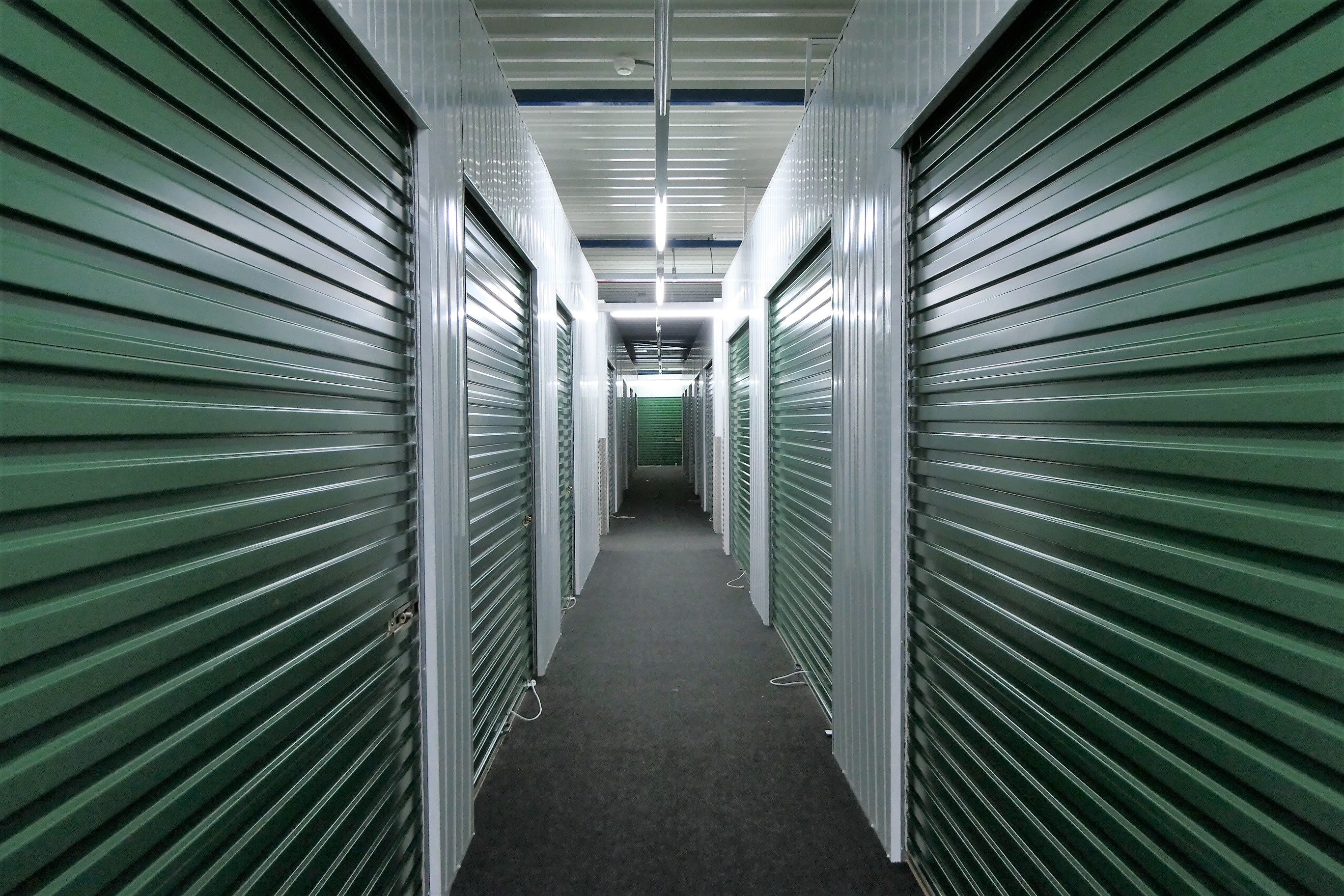
Have you ever rented a storage unit? They’re an excellent solution for storing things either short or long-term, and they’re secure and convenient. If this is your first time renting one, there are some things you should know.
- First, let’s talk about how storage units work, because the process is typically similar regardless of your storage company. You find a storage facility near you, and sign a contract to secure a unit within that space for a specified amount of time. Some companies have a three-month minimum requirement, while most others rent units on a month-to-month basis. You’ll need government-issued ID to rent the unit, like a driver’s license, military ID, passport, or state ID. Read your contract thoroughly before you sign it, so you make sure you’re clear on the terms. For instance, you’ll need to know things like when your payments are due and how much notice you’ll need to give before moving out of your unit.
- Rules for storage units are basically common sense. You can’t live in your storage unit or conduct business there, and you’ll be restricted in terms of what kinds of items you can store. Essentially, nothing hazardous to your unit or the units around you can be stored in a storage unit, nor can anything illegal.
- There are a few different reasons people rent storage units. Some people need seasonal storage of things like holiday decorations or sports gear. Others need temporary storage, during a move or a renovation. Sometimes, people who are decluttering or downsizing need a place to store things, and sometimes when a family member comes to stay for a while, extra space is needed to store what used to be stored in the guest room. College students often store their dorm room furnishings over the summer, and members of the military use self-storage when they’re deployed. People often choose self-storage for a car, boat, or RV.
- There are two different types of storage. Full-service storage involves a company that will pick up a customer’s belongings and transport them to the storage unit. Often, customers can request a pickup or a return on a smartphone app, which is very convenient. Full-service storage facilities take pictures to document what you’re storing and create an online inventory list. Self-storage is a more popular option because it’s more affordable but still safe and secure. Self-storage customers take their things to the storage unit themselves, and pick things up when they need them.
- Before you rent a storage unit, consider your needs carefully. What do you need to store? Do you need climate control? What size unit do you need? Self-storage units typically come in at least five sizes: 5’x5’, 5’x10’, 10’x10’, 10’ by 15’, and 15’ by 20’. The size you need will be based on how much you need to store, and you can find online calculators to help you estimate the appropriate size.
- Do you need indoor, outdoor, or climate controlled storage? Indoor storage units are sometimes climate-controlled and sometimes not. Outdoor storage units are covered and locked, with drive-up access. They’re good for large items and vehicles, but indoor storage is better for anything valuable or fragile. A climate-controlled storage unit is best for storing clothing, furniture, and anything else you want to protect from extreme temperatures, mold, and mildew.
- Assess the amenities before deciding on a storage unit. How accessible will your storage unit be? Some facilities offer 24-hour access, while others are closed on certain days, like Sundays or holidays. It’s important to find a facility with hours that are convenient for you. You’ll also want to make sure the facility you choose is secure. Is there in-person surveillance? How safe and secure is the facility? Pay attention to the location and the lighting, and make sure you feel safe on the property.
- Prepare your things before you store them. Acquaint yourself with the rules and restrictions about what you can store before you pack up your things. Then take the time to create a detailed list of everything you’re storing. Taking inventory can help you remember what you’ve got in storage, and it can be useful if you ever need to file an insurance claim. Clean all items before placing them in storage, and disassemble furniture to make better use of your storage space. Pack everything carefully in high-quality boxes, cushioning it as you would for a move, and label everything clearly. Place items strategically so that you’ll be able to find things easily and nothing will be damaged.
- Consider insurance. Having your items properly insured will give you the peace of mind that comes with knowing that you’re protected in case of breakage or theft. This does not necessarily mean, though, that you need to purchase storage insurance. While many storage facilities offer affordable self-storage insurance options, you may already be covered by your homeowners or renters insurance.
When you’re ready to rent a self-storge unit, choose Pouch Self Storage. We’ve been operating mini-storage facilities since 1979 and we’re committed to keeping our clients’ belongings safe. Founded by John Yelland, who hails from Australia, Pouch Self Storage is named in honor of the kangaroo’s pouch- nature’s safe and secure storage spot. We’re an industry leader in design, building, and maintenance of self-storage facilities, and we strive to give our occupants the most advanced security systems available. At our nine Southern California facilities, you’ll find state-of-the-art computer monitoring systems that allow our self-storage managers to monitor the opening and closing of every storage unit door, 24 hours a day. For more information, call (800) 378-4598 or contact us through our website.
-
A “Living on the Road” Checklist
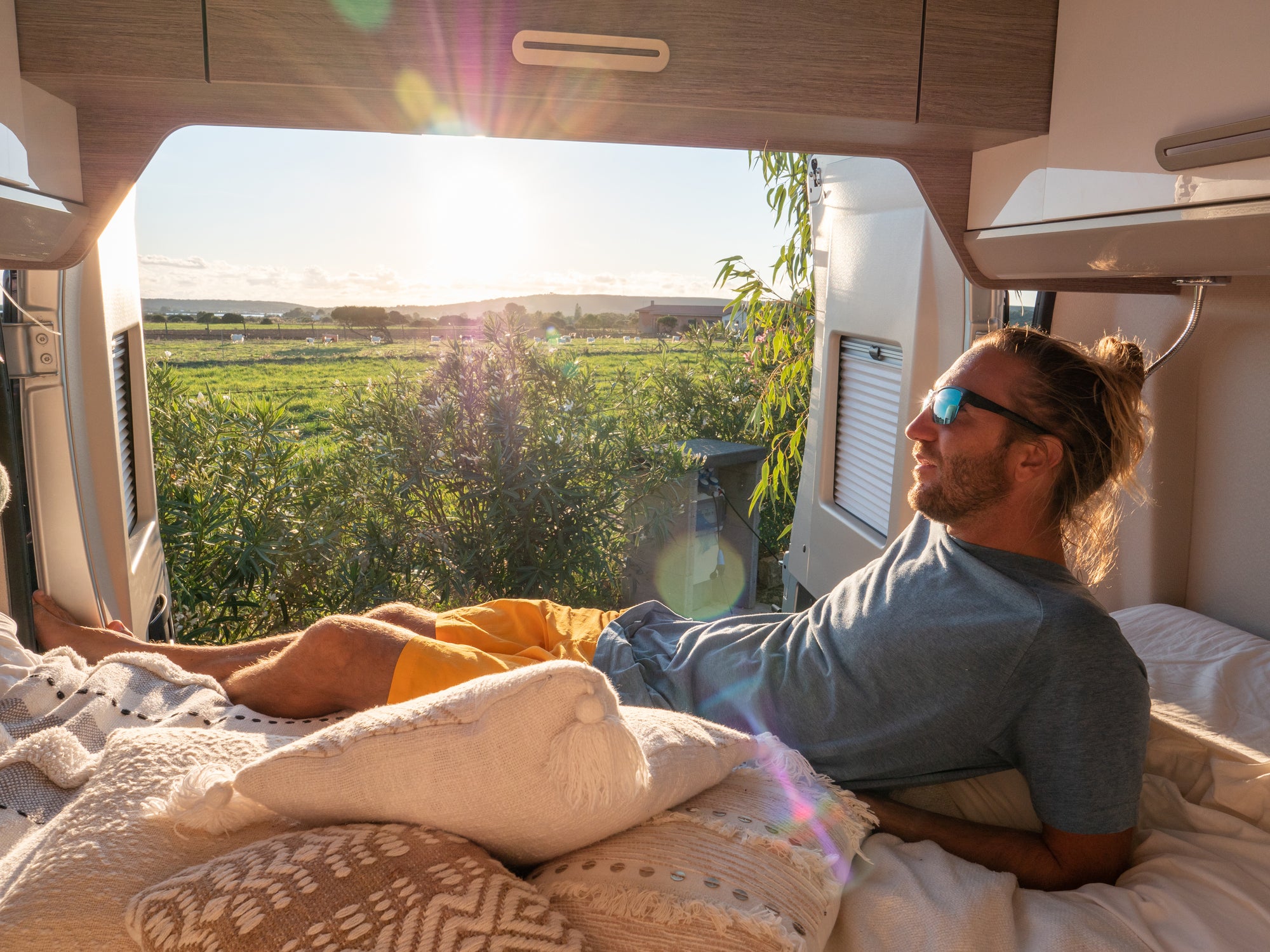
Coming out of the pandemic, many of us are facing a unique and unfamiliar situation. We’ve been in a period of lockdown but have also begun to work remotely. Now that we’re able to move throughout the world more freely, the idea of living on the road seems like an interesting concept. Can you pick up and go, breaking ties with permanent housing in favor of wandering? You might just want to do this for a season, you might want to have an adventure, or you might be considering it as a way of life. No matter how long you intend to do it, the question remains: what will you do with your things?
You might want to give away a lot of your belongings, but there are certainly some things you won’t want to part with. For those items, self-storage is an excellent option. What will you take, and what will you leave behind? Here’s a list of some things you’ll want to bring along on your travels.
- Clothing: No matter what kind of weather you expect, it’s smart to keep a few jackets, hoodies, or sweaters with you in case it gets chilly. You’ll also want to take a bathing suit, because you never know when you might get the opportunity to swim. Beyond that, you really only need a few outfits. Streamline your wardrobe, giving away or selling the things you no longer want to keep, and storing what you love but don’t currently need. Travel light and keep the bulk of your wardrobe readily accessible in your storage unit.
- Medications: Have a plan for managing your prescriptions while you’re away. Take over-the-counter medications with you- in most places it’s illegal to store medication in a storage unit.
- Money: Managing your money is another thing that requires a plan while you’re away. If you don’t already have online banking, now is the time to set it up. Take some cash along with you on the road, but not enough to attract thieves. There’s no reason to store money in a storage unit, but financial records and other important paperwork can safely be stored.
- Electronics: For the most part, you can store your electronics in a self-storage unit. Take care to choose a unit that’s climate control if you’re going to go this route. Of course, there are some electronics you’ll need on the road, especially if you plan to work remotely. Make sure you have enough adaptors and chargers to keep your electronics powered up, and check with your storage provider to determine if there are any limitations on things like batteries.
- Furniture and Linens: It can be tempting, when you’re streamlining your lifestyle, to sell all your furniture. Don’t do it! There will come a time when you’ll need furniture, and you won’t want to have to buy it all again. Give away things you don’t like but store the majority of your pieces. Store much of your bedding and other linens, too, but keep out two of everything so that you can use one and wash one.
- Entertainment: Less is more in this arena, especially if you’re traveling abroad. Digitize your favorite music and carry it with you but leave the television behind in storage. Instead of bringing books, consider an e-reader. Bring a deck of cards, and if you play an instrument that is portable, bring that too. Part of the adventure is being in the moment, so you don’t need a wealth of distractions.
- Miscellaneous Must-haves: This will vary from person to person, but a few items that are good to have include a first aid kit, a blanket, and baby wipes. Bring along plastic bags; they’ll serve a variety of purposes. If you’re taking a vehicle, bring spares and tools in case of emergency, and pop a shovel into your trunk. Of course, in the current environment it’s a good idea to bring along hand sanitizer and masks, as well.
Now that you know what you’ll need out on the road, turn to Pouch Self Storage to store the rest of your things. We’ve been operating mini-storage facilities since 1979 and we’re committed to keeping our clients’ belongings safe. Founded by John Yelland, who hails from Australia, Pouch Self Storage is named in honor of the kangaroo’s pouch- nature’s safe and secure storage spot. We’re an industry leader in design, building, and maintenance of self-storage facilities, and we strive to give our occupants the most advanced security systems available. At our nine Southern California facilities, you’ll find state-of-the-art computer monitoring systems that allow our self-storage managers to monitor the opening and closing of every storage unit door, 24 hours a day. Currently, we’re abiding by CDC recommendations and implementing social distancing, but you can still reach us by calling (800) 378-4598 or contacting us through our website.
How Can You Organize your Storage Unit for Frequent Access?
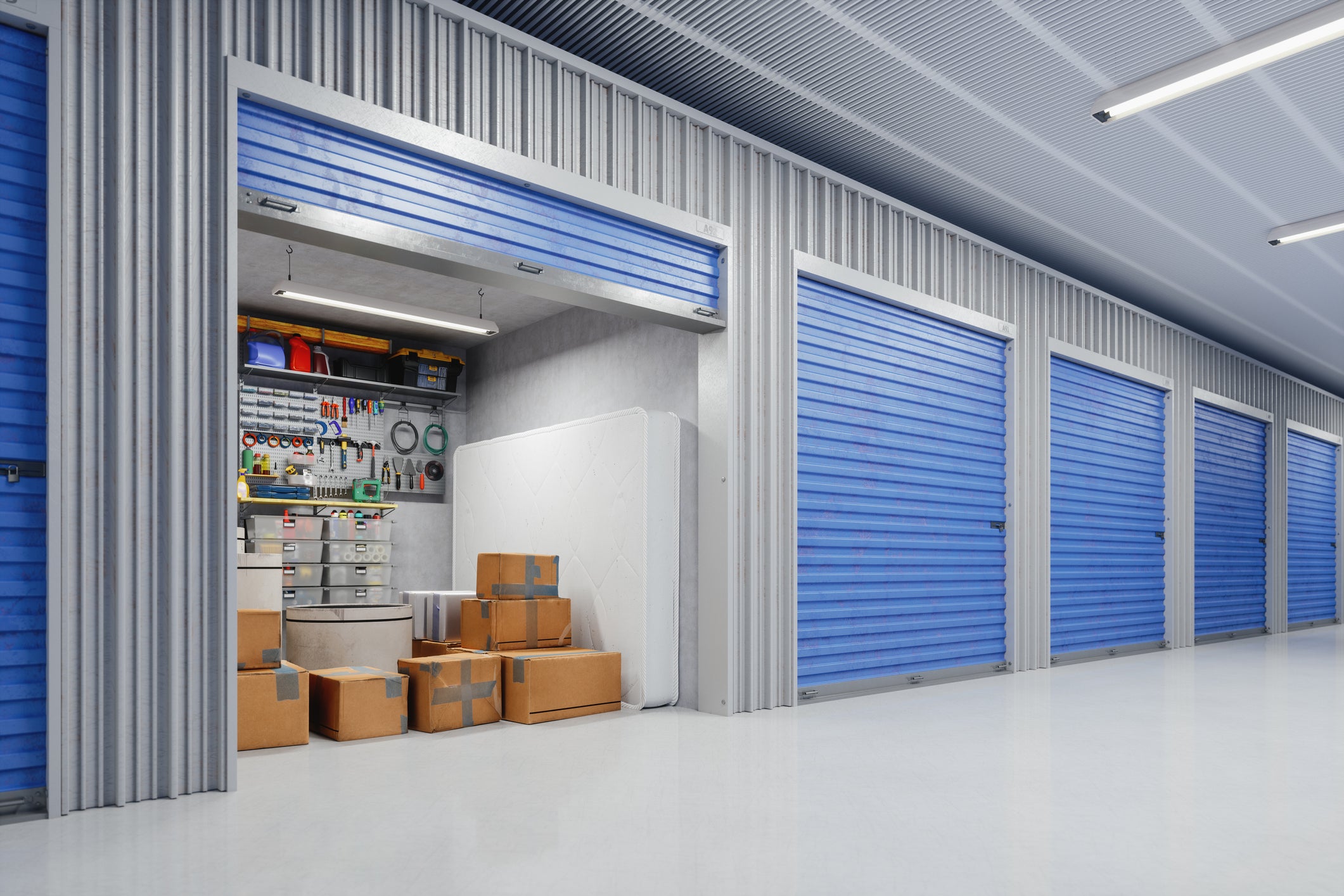
A storage unit is a convenient place to store things you have no room for at your home. If you need to access your items frequently, though, you’ll have to spend some time organizing it. Here, we offer some tips for keeping your storage unit organized, functional, and easily accessible.
- Create a well-organized inventory list. It’s great to diagram your space and document every item in your storage unit, but the most important thing is to find a system that works for you. Consider the things you’ll need to access frequently, and keep an accurate list detailing where those items are located. If you’re storing personal items, things you might need to retrieve easily include seasonal clothing, camping gear, tools, and holiday decorations. If you’re a business storage customer, you may need to access extra inventory, office supplies, documents, or marketing material. Keeping a list on paper or a spreadsheet on your computer will help you keep track of everything you need.
- Carefully plan your layout. Before you put anything in the storage unit, use the exact dimensions of the unit to plan for the best use of the space. Think about how often you’ll visit the unit and which items you’ll need most frequently. Try to create paths to facilitate easy access, with large items like furniture against the walls and the things you’ll access most often facing the path so you can easily retrieve them.
- Use organizational furniture to make the most of your space. Invest in shelving, and you’ll be able to maximize your vertical space. Sturdy metal, wood, or plastic units are extremely useful, and can easily hold large or oddly shaped items that might not fit in boxes. If you use shelves higher than you can easily reach, keep a step ladder in the storage unit.
- Choose clear plastic bins instead of cardboard boxes. Cardboard boxes are cheap and convenient, but for things you need frequently, it’s better to use plastic bins so you can easily identify what’s inside. Clear plastic bins are also easy to stack and store.
- Lift your belongings with pallets. When you use wood or plastic pallets you can keep your boxes and furniture off the ground. This is particularly important if you’re storing items that are vulnerable to moisture.
- Be specific with your labeling. When you are creating your inventory list, make note of where things are stored. List all of the items on the boxes, too, so that you’ll be able to find specific items quickly. It can be helpful to number the boxes on top and at least one side so that you can easily locate the box you need.
When you’re looking for a place to safely store your belongings, choose Pouch Self Storage. We’ve been operating mini-storage facilities since 1979 and we’re committed to keeping our clients’ belongings safe. Founded by John Yelland, who hails from Australia, Pouch Self Storage is named in honor of the kangaroo’s pouch- nature’s safe and secure storage spot. We’re an industry leader in design, building, and maintenance of self-storage facilities, and we strive to give our occupants the most advanced security systems available. At our nine Southern California facilities, you’ll find state-of-the-art computer monitoring systems that allow our self-storage managers to monitor the opening and closing of every storage unit door, 24 hours a day. Currently, we’re abiding by CDC recommendations and implementing social distancing, but you can still reach us by calling (800) 378-4598 or contacting us through our website.
How to Pack Efficiently
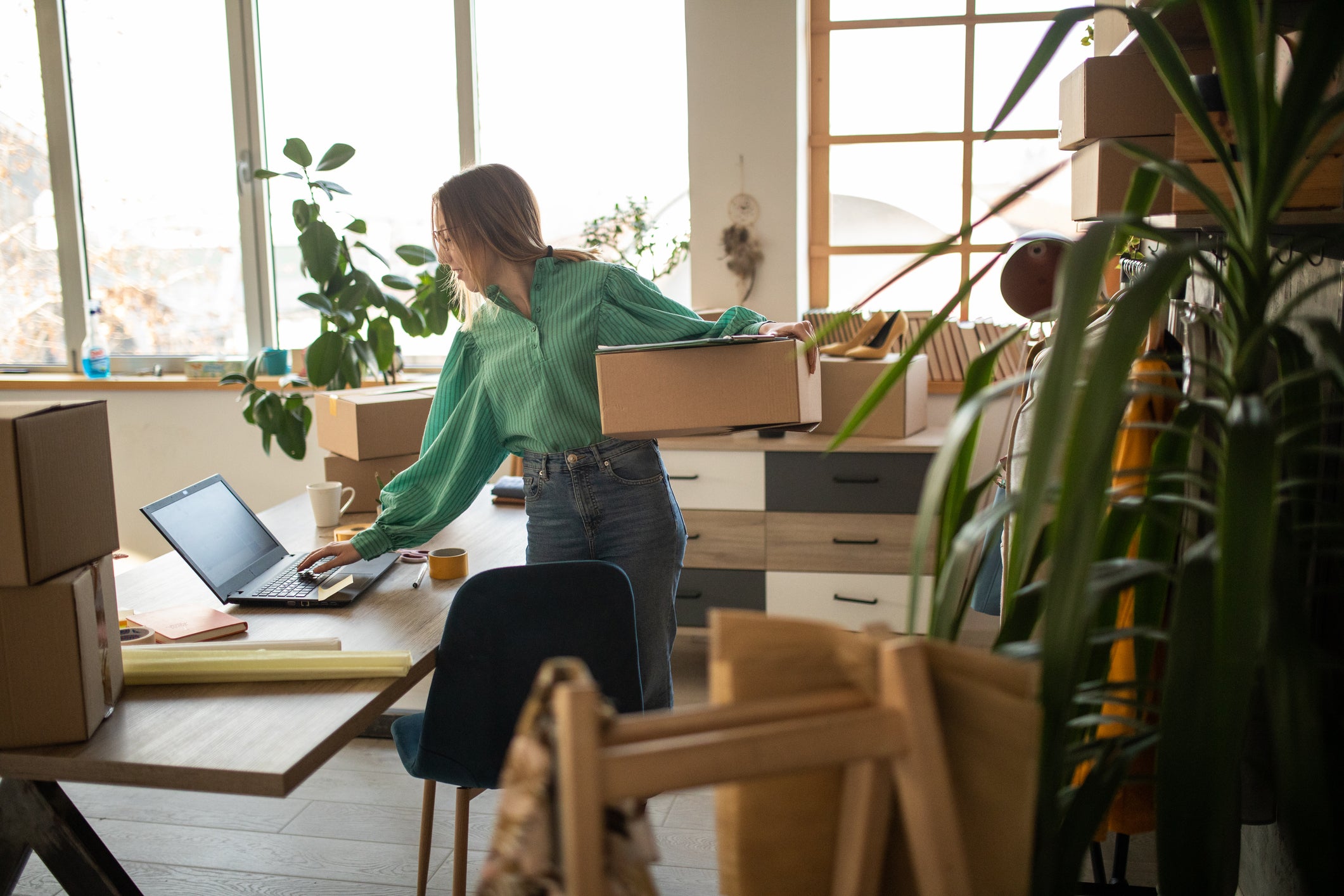
A storage unit is a convenient option, especially if you’re moving and need a place to temporarily store some of your things while you unpack. However, if you want your things to be in good condition when you retrieve them, it’s important to be careful about packing them. Follow these tips for packing efficiently and well.
- Know what you can and cannot store. The storage facility is likely to provide you with a list of rules, regulations, and restricted items. If you don’t receive one, ask for it. You won’t be allowed to store dangerous or flammable items, or perishable food, medicine, or plants.
- Decide what you need to store. Don’t store things unnecessarily, because storing a lot of items means you’ll need a large storage unit, which means more money. Before you store, clear the clutter and give away, sell, or donate anything you don’t need to keep.
- Keep a detailed inventory. It’s easy to lose track of what’s in your storage unit if you don’t have an inventory list. It may be helpful to print two lists, keeping one with you and one in the storage unit so you’ll have it on hand when you’re looking for things you need.
- Pack only clean items. It’s disheartening to retrieve items from your storage unit, only to discover they’ve deteriorated because they were put away dirty. Before you pack your things away, wipe everything down with an all-purpose cleaning spray, vacuum upholstered furniture, and clean out appliances. When you get them out of storage later, your items will be in good condition, and they won’t have any unpleasant odors.
- Use clear plastic storage bins. Storing your belongings in clear plastic bins makes it easier to find them when you need them. What’s more, airtight bins will help protect your items.
- Label everything. Labels that clearly describe the contents of boxes make things easier to find, especially if you opt for cardboard boxes over plastic bins. Be specific, listing exactly what’s in the box instead of a generic category like “kitchen items.”
- Protect your items. Especially if your unit isn’t climate controlled, take care to prevent damage to the items you’re storing. Make sure everything is dry, apply protective spray to furniture and leather goods, and seal boxes to keep out moisture. Store electronics and cords in plastic bags, pack clothing in wardrobe boxes or in hanging garment bags, place mattresses in storage bags, and cover furniture with a cotton sheet to keep pests and bad weather from damaging it.
- Prepare large items properly. Take large pieces of furniture apart before storing them, and store box springs and mattresses flat. Leave washers, dishwashers, and refrigerators slightly open to prevent mold and mildew, and wrap small appliances in bubble wrap or foam to protect them.
- Have a plan when placing things into the unit. Pack your unit strategically, placing large and heavy items on the bottom of the unit. Don’t store mattresses under heavy things to prevent damage. Keep things you’ll need to access frequently near the door or somewhere else where you can easily retrieve them. Use good quality packing supplies and the best lock you can afford.
Once your things are packed and you’re looking for a good place to store them, choose Pouch Self Storage. We’ve been operating mini-storage facilities since 1979 and we’re committed to keeping our clients’ belongings safe. Founded by John Yelland, who hails from Australia, Pouch Self Storage is named in honor of the kangaroo’s pouch- nature’s safe and secure storage spot. We’re an industry leader in design, building, and maintenance of self-storage facilities, and we strive to give our occupants the most advanced security systems available. At our nine Southern California facilities, you’ll find state-of-the-art computer monitoring systems that allow our self-storage managers to monitor the opening and closing of every storage unit door, 24 hours a day. Currently, we’re abiding by CDC recommendations and implementing social distancing, but you can still reach us by calling (800) 378-4598 or contacting us through our website.
